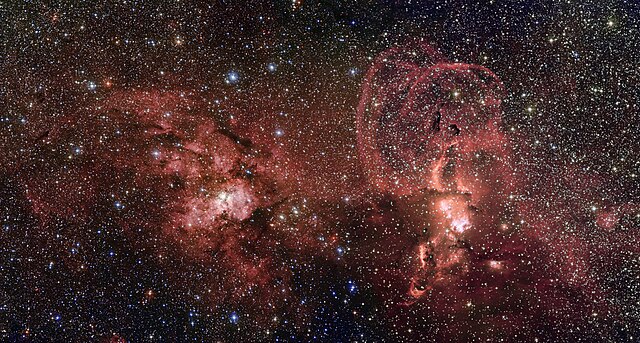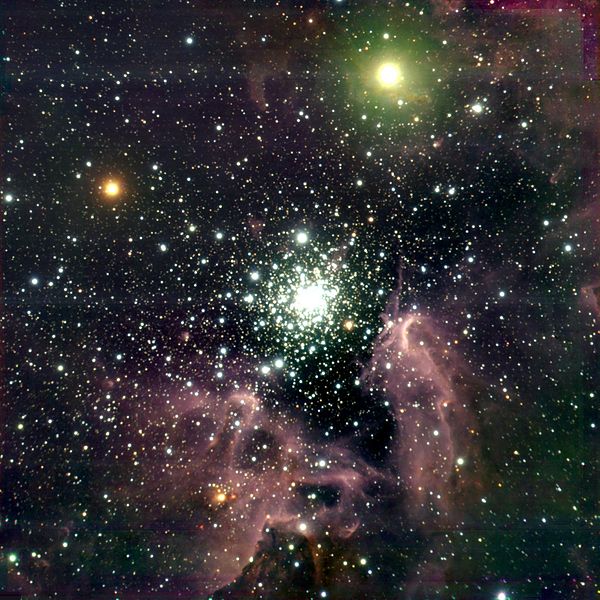NGC 3603 is a nebula situated in the Carina–Sagittarius Arm of the Milky Way around 20,000 light-years away from the Solar System. It is a massive H II region containing a very compact open cluster HD 97950.
NGC 3603 in visible and near infrared light
NGC 3603 (left) and NGC 3576 are star formation regions in the southern Milky Way.
Image of the NGC 3603 region were obtained in three near-IR filter bands (Js, H and Ks) with the ISAAC instrument at the ANTU telescope
A super star cluster (SSC) is a very massive young open cluster that is thought to be the precursor of a globular cluster. These clusters called "super" because they are relatively more luminous and contain more mass than other young star clusters. The SSC, however, does not have to physically be larger than other clusters of lower mass and luminosity. They typically contain a very large number of young, massive stars that ionize a surrounding HII region or a so-called "Ultra dense HII region (UDHII)" in the Milky Way Galaxy or in other galaxies. An SSC's HII region is in turn surrounded by a cocoon of dust. In many cases, the stars and the HII regions will be invisible to observations in certain wavelengths of light, such as the visible spectrum, due to high levels of extinction. As a result, the youngest SSCs are best observed and photographed in radio and infrared. SSCs, such as Westerlund 1 (Wd1), have been found in the Milky Way Galaxy. However, most have been observed in farther regions of the universe. In the galaxy M82 alone, 197 young SSCs have been observed and identified using the Hubble Space Telescope.

Westerlund 1
NGC 3603
NGC 2070
R136 (Located in the Tarantula Nebula)






